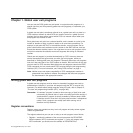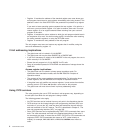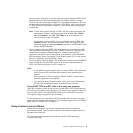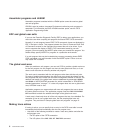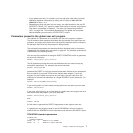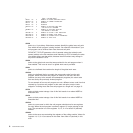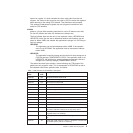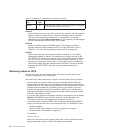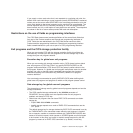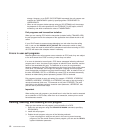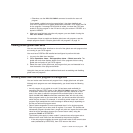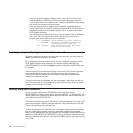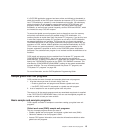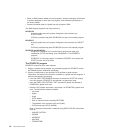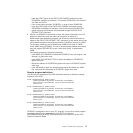
Table 1. TCB indicators in DFHUEPAR (continued). Description
Symbolic
value
2-byte
code
Description
UEPTX9 X9 An X9 open TCB, used for C and C++ programs, compiled with
the XPLINK option, that are in user key
UEPSTACK
points to the kernel stack entry. This value must be moved to the exit program’s
register 13 before invoking the XPI. For more information, refer to Chapter 3,
“The user exit programming interface (XPI),” on page 305. The storage
addressed by this field must not be altered. If it is corrupted, your exit program
will have unpredictable effects on your CICS system.
UEPXSTOR
points to a 320-byte area of DFHUEH-owned LIFO storage that the exit
program should use when invoking the XPI. For more information, refer to
Chapter 3, “The user exit programming interface (XPI),” on page 305.
UEPTRACE
points to the trace flag, which indicates whether tracing is on in the calling
management module or domain. This enables you to control your use of the
XPI TRACE_PUT macro in line with the tracing in the CICS module or domain.
The XPI TRACE_PUT function should be used only when tracing is on. The
trace flag is a single byte, whose top bit is set on when tracing is switched on.
You test this setting using the symbolic value UEPTRON. The rest of the byte
addressed by UEPTRACE is reserved, and its contents should not be
corrupted.
Returning values to CICS
At some exit points, you can influence what CICS does on return from an exit
program by supplying a return code value.
You must set the return code value in register 15 before leaving the exit program.
v Use character string values rather than using hard-coded values. Character
strings equating to valid return code values are provided with the parameter list
for each exit point. For example, at exit XMNOUT in the monitor domain, you are
presented with the address of a monitoring record. If you decide in your exit
program that this record should not be written to SMF, you can set the return
code value UERCBYP (meaning “bypass this record”) before returning to CICS
and CICS suppresses the record.
v If you have more than one exit program running for an exit point, use parameter
UEPCRCA of DFHUEPAR to set the return code. For more information, see
“Invoking more than one exit program at a single exit” on page 13
v If your exit program issues an EXEC CICS command and use the DFHEIENT
macro, you must use this macro to set the return code. The DFHEIRET macro:
– Restores registers
– Places a return code in register 15 after the registers are restored
– Returns control to the address in register 14.
For example:
DFHEIRET RCREG=nn
where nn is the number of any register (other than 13) that contains the return
code to be placed in register 15 after the registers are restored.
10 Customization Guide




